Are you looking to secure your basement window? If so, you have definitely come to the right place. Basement windows are often overlooked when it comes to home security, yet they can be a vulnerable point for potential break-ins.
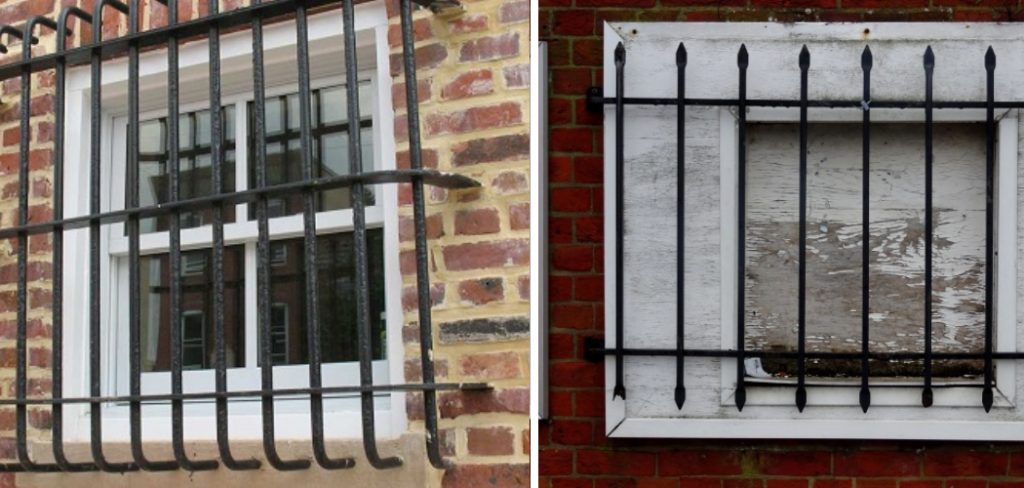
Securing your basement windows is a crucial step in enhancing your home’s overall safety and security. These windows are often overlooked, yet they can be a potential entry point for burglars and intruders. Implementing a few straightforward measures can significantly reduce this risk and ensure peace of mind.
This guide will cover essential tips and strategies on how to secure basement window, from simple fixes to more advanced security solutions. Whether you’re looking to upgrade existing windows or install new, more secure options, this guide will provide the knowledge and tools needed to safeguard your home effectively.
Why Secure Basement Windows?
Basement windows are often considered less critical when it comes to home security, as they are typically located in areas that are not easily accessible. However, this does not mean that they should be overlooked.
Basement windows can provide a vulnerable entry point for intruders due to several factors:
- Basement windows are often small and hidden from view, making them an attractive target for burglars.
- They can be easily pried open, as they are usually not reinforced with additional security measures.
- If the window is located below ground level, it may be easier to break in without attracting attention from neighbors or passersby.
Moreover, securing your basement windows can also protect against other potential hazards, such as severe weather or basement flooding. By taking the necessary steps to secure your basement windows, you can safeguard your home and loved ones from various risks.
What Will You Need?
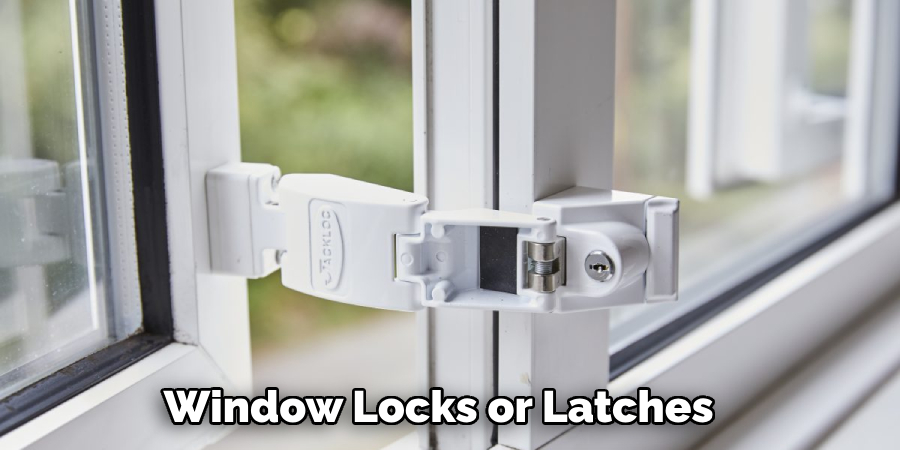
Before getting started, gathering all the necessary materials and tools for securing your basement windows is essential. The specific items you will need may vary depending on your chosen method, but here are some general recommendations:
- Security bars or grilles
- Window locks or latches
- Reinforced glass or polycarbonate sheeting
- Tools such as a drill, screws, and a saw
- Caulk or weatherstripping
Once you have everything you need, it’s time to start securing your basement windows.
10 Easy Steps on How to Secure Basement Window
Step 1. Install Security Bars or Grilles
One of the most effective ways to secure your basement windows is by installing security bars or grilles. These metal barriers can prevent intruders from gaining access to your home while still allowing air and light to pass through.
When choosing security bars or grilles, make sure they are made of durable materials such as steel and have secure locking mechanisms. You can also opt for removable bars with a quick-release feature to allow for easy escape in case of an emergency.
Step 2. Reinforce the Glass
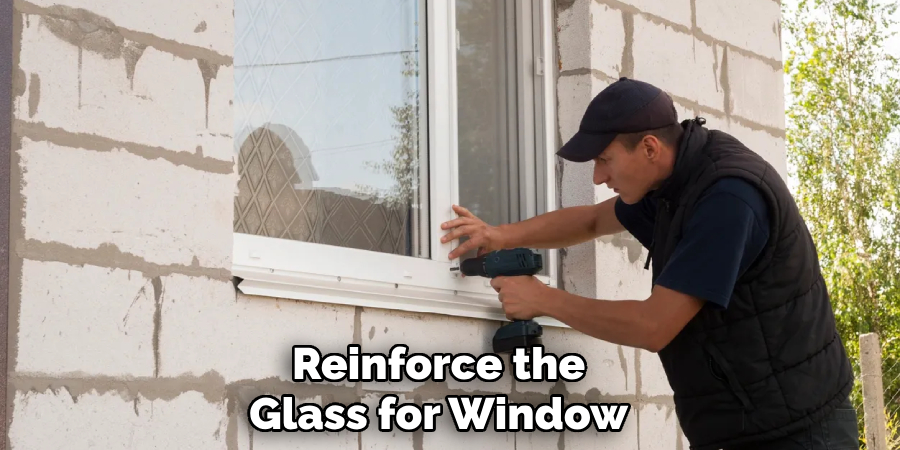
If your basement windows have glass panes, it’s crucial to reinforce them to prevent easy breakage. You can do this by adding a layer of polycarbonate sheeting or reinforced glass over the existing pane.
Polycarbonate sheeting is an excellent option as it is shatter-resistant and more durable than traditional glass. It’s also relatively affordable and easy to install with the right tools.
Step 3. Install Window Locks or Latches
Securing your basement windows isn’t complete without adding robust window locks or latches. These devices provide an additional layer of security, making it difficult for intruders to force the windows open from the outside. When selecting locks or latches, consider options that are compatible with the type of window you have.
For sliding windows, a keyed lock or a sliding window latch can be very effective. Consider sash or hinge locks for windows that open outward or upward. Installation is usually straightforward and can be done with minimal tools, ensuring that your windows cannot be easily tampered with or opened from the outside.
Step 4. Employ Window Well Covers
Window well covers are an excellent addition to basement security, especially for windows that are below ground level. These covers serve a dual purpose of preventing intruders from accessing basement windows and safeguarding against debris, rainwater, and animals.

Opt for a clear polycarbonate cover to allow light into your basement while keeping it secure. Ensure that the cover fits snugly over your window well and is anchored securely to withstand attempts to remove it from the outside. For safety reasons, consider installing a cover with an easy-to-use emergency escape mechanism from the inside.
Step 5. Use Motion Sensor Lighting
Motion sensor lighting is an effective deterrent against potential burglars. Installing motion-activated lights around your basement windows can scare off intruders by illuminating them as they approach your home.
Choose lights that are bright enough to cover the vicinity of your basement windows but not so bright as to disturb your neighbors. Position the lights strategically to ensure there are no dark spots or shadows where intruders could hide undetected.
Step 6. Apply Window Film for Privacy and Strength
Privacy window film enhances security by obstructing the view into your basement, making it difficult for would-be burglars to scope out potential entry points or valuables inside. Additionally, certain types of window film can increase the strength of the glass, making it more resistant to breaking.
These films are typically easy to apply and can be cut to fit the size of your window panes. Not only do they offer privacy and added protection, but they can also improve energy efficiency by reducing heat transfer. When selecting a window film, look for options that provide a balance of privacy, strength, and light transmission to meet your security and aesthetic needs.
Step 7. Plant Thorny Bushes Around Basement Windows
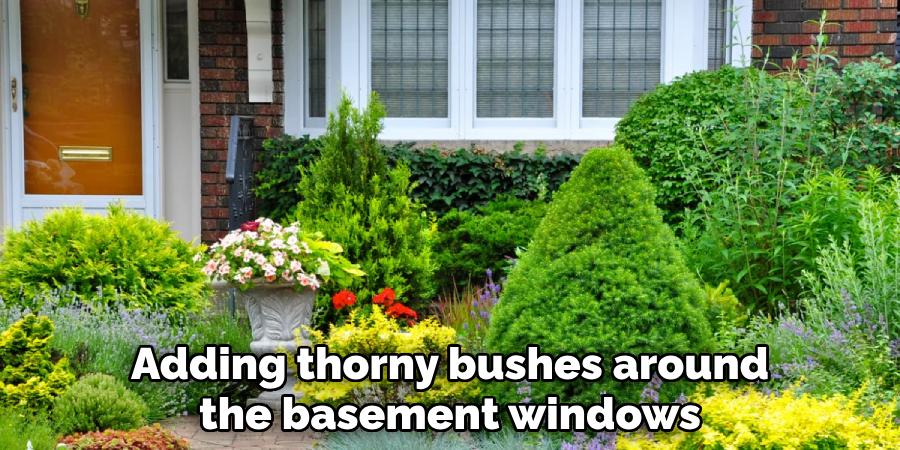
Adding thorny bushes or shrubs around your basement windows can be a natural barrier against intruders. Plants like roses, holly, or blackberry bushes are not only aesthetically pleasing but also can deter burglars due to the risk of injury from their thorns.
When planting these bushes, ensure they do not obstruct the view of the windows entirely, as it is important to keep a clear line of sight for surveillance purposes. Furthermore, maintaining the bushes by trimming them regularly will prevent them from becoming potential hiding spots while still serving as an effective deterrent.
Step 8. Consider Installing Alarm Systems
For an added layer of security, consider installing an alarm system that covers your basement windows. You can opt for systems that trigger an alarm when a window is broken, opened, or tampered with. Many modern alarm systems offer integration with home automation and can send alerts to your mobile device if any security breaches are detected.
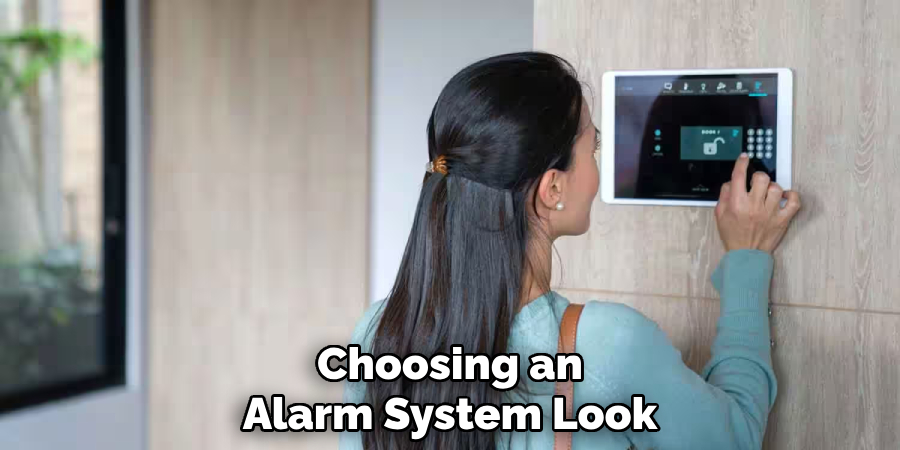
When choosing an alarm system, look for one with customizable settings to ensure it meets your specific security needs. Installation might require professional assistance, but the peace of mind it provides is invaluable. An alarm system not only acts as a deterrent but also ensures a quick response in the event of an attempted burglary.
Step 9. Maintain Regular Window Checks and Updates
Maintaining regular checks and updates is crucial to ensure the long-term security of your basement windows. This involves inspecting the windows, frames, locks, and any security devices for signs of wear and tear or damage. Additionally, staying informed about the latest security technologies and upgrading your security measures accordingly can enhance the protection of your home.
Simple actions like tightening loose screws, replacing worn-out locks, or updating outdated security systems can make a significant difference in maintaining an impenetrable barrier against potential intruders. Remember, the effectiveness of your basement window security largely depends on its weakest link; hence, regular maintenance is key to ensuring all components work together seamlessly to safeguard your home.
Step 10. Regularly Update Emergency Exit Plans
Ensuring your home’s security also means preparing for situations where you might need to exit quickly and safely. Regularly updating and practicing your emergency exit plans, with a specific focus on egress from basement areas, is essential. This includes ensuring that all family members are aware of the fastest escape routes and that any window well covers installed can be easily opened from the inside.
Additionally, keep emergency tools, such as a window breaker or a sturdy ladder for deeper wells, accessible near basement windows. Conducting drills a few times a year can help everyone remember the plan under stress, ensuring that you and your loved ones can exit the basement quickly and safely in case of an emergency, such as a fire.

By following these steps and implementing multiple layers of security, you can create a strong defense against intruders attempting to gain access to your basement through the windows.
5 Additional Tips and Tricks
Tip 1: Reinforce Window Frames and Latches: Reinforcing the structural integrity of your basement windows is a crucial step in enhancing security. Consider adding steel or aluminum reinforcement bars to the window frames to make them more resistant to forced entry. Additionally, replace any worn-out latches with sturdy ones that can withstand significant force.
Tip 2: Add Window Bars: Installing window bars or grilles effectively prevents burglars from breaking through your basement windows. These bars are typically made of strong materials such as steel and can be customized to fit the size and design of your basement windows. However, make sure there is a quick-release mechanism in case of emergencies.
Tip 3: Use Shatter-Resistant Glass: Consider replacing your basement windows with shatter-resistant glass, which is designed to withstand heavy impact and prevent breakage. This type of glass is commonly used in high-security buildings and can significantly increase the strength of your windows against forced entry.
Tip 4: Utilize Motion-Sensing Lights: Installing motion-sensing lights around your basement windows is an effective way to deter potential intruders. These lights are triggered by movement and can startle burglars, making them think twice before attempting a break-in. You can also connect the lights to an alarm system for added security.
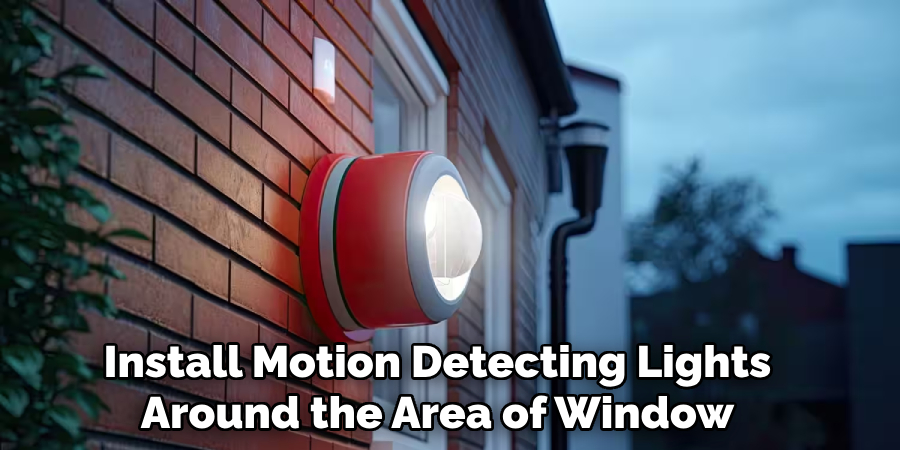
Tip 5: Install Security Cameras: Adding security cameras to your basement windows can act as both a deterrent and a surveillance tool. They provide a visual record of any suspicious activity around your windows that can help identify potential intruders. Just ensure the cameras are installed in a position that captures clear footage of the windows, and regularly check and maintain them for optimal performance.
With these additional tips and tricks, you can further fortify the security of your basement windows, making it even more difficult for intruders to gain access.
5 Things You Should Avoid When Securing Basement Windows
Avoid 1: Neglecting Locks on Small Windows: It’s a common misconception that small basement windows do not require locks due to their size. Intruders can exploit any entry point, regardless of size, making securing all windows with sturdy locks essential.
Avoid 2: Blocking Emergency Exits: While securing your basement windows, ensure that safety measures do not prevent them from being used as emergency exits. Window security features, such as bars or grilles, must include quick-release mechanisms to facilitate an easy and quick escape in case of an emergency.
Avoid 3: Overlooking Interior Security Measures: Focusing solely on external window security can leave your home vulnerable from the inside. Utilize internal security measures such as motion sensors and alarm systems that cover the basement area to enhance overall security.
Avoid 4: Using DIY Solutions Without Proper Research: While DIY security solutions can be cost-effective, improperly installed features can be easy for burglars to bypass. Ensure you thoroughly understand the security features you’re implementing, or consult a professional for advice and installation.
Avoid 5: Ignoring the Importance of Visibility: Completely obscuring windows with heavy curtains or permanently affixed window covers can make it difficult to spot potential intruders from the inside. Opt for security measures that maintain visibility, allowing you to see out while preventing intruders from looking in.
By avoiding these common mistakes, you can ensure that your efforts to secure basement windows are effective and do not compromise your safety in any way.
How Do You Manually Lock a Window?
Manually locking a window can be done in several ways, depending on the type of window. Here are some common techniques:
- Sliding Windows: Sliding windows usually have a latch or lock mechanism on the side of the window frame. You can manually slide this to close and lock the window.
- Double-Hung Windows: Double-hung windows have two sashes (movable panels). To lock them, you need to push the top sash down and pull the bottom sash up until they meet in the middle. Then, a lever or latch should be turned or slid into place to secure both panels.
- Casement Windows: Casement windows have a crank handle that opens and closes the window. To lock them, simply close the window and turn the handle in a clockwise direction until it is fully closed.
- Awning Windows: Awning windows are similar to casement windows but open from the bottom instead of the side. To lock them, close the window and use a lever or latch to secure it in place.
Make sure to test your manual locking methods regularly to ensure they are functioning correctly and provide adequate security for your basement windows.
Which Type of Window is Best for Basement?
The type of window that is best for a basement depends on several factors, including the purpose and location of the room. Here are some common types of windows that can work well in basements:
- Sliding Windows: Sliding windows are a popular choice for basements because they are easy to operate, provide good ventilation, have a secure locking mechanism, and are relatively affordable.
- Casement Windows: Casement windows can be a good option for basements that need more natural light and ventilation. They provide an unobstructed view when open and have a tight seal when closed, making them energy-efficient.
- Hopper Windows: Hopper windows are hinged at the bottom and open inward from the top. They are commonly used in basements as they allow for ventilation while also providing privacy and security.
- Glass Block Windows: Glass block windows are made of thick, resistant glass blocks that provide maximum security. They also offer some natural light and can be designed to match the style of your home’s exterior.
Ultimately, the best type of window for your basement will depend on your specific needs and preferences. Consider consulting with a professional for advice on the most suitable option for your home.
Conclusion
How to secure basement window is a crucial aspect of home security that should never be overlooked. By implementing the tips and avoiding the common mistakes outlined in this guide, homeowners can significantly enhance the safety of their homes from potential intruders.
Remember, each layer of security adds to the overall protection of your property. Therefore, it’s advisable to combine physical security measures, such as upgraded locks and reinforced glass, with vigilance practices like maintaining clear visibility and connecting security systems to alert mechanisms. Always prioritize the balance between security and safety, ensuring that emergency exits remain accessible.
Investing time and resources into securing your basement windows not only deter burglars but also gives you peace of mind, knowing that you’ve taken proactive steps to protect your home and loved ones.
About
Safety Fic is a distinguished figure in the world of Diy design, with a decade of expertise creating innovative and sustainable Diy solutions. His professional focus lies in merging traditional craftsmanship with modern manufacturing techniques, fostering designs that are both practical and environmentally conscious. As the author of diy, Safety Fic delves into the art and science of Safety Fic-making, inspiring artisans and industry professionals alike.
Education RMIT University
(Melbourne, Australia) Associate Degree in Design (Safety Fic) Focus on sustainable design, industry-driven projects, and practical craftsmanship. Gained hands-on experience with traditional and digital manufacturing tools, such as CAD and CNC software.
Nottingham Trent University
(United Kingdom) Bachelor’s in diyfastly.com and Product Design (Honors) Specialized in product design with a focus on blending creativity with production techniques. Participated in industry projects, working with companies like John Lewis and Vitsoe to gain real-world insights.
Publications and Impact
In diy, Safety Fic his insights on indoor design processes, materials, and strategies for efficient production. His writing bridges the gap between artisan knowledge and modern industry needs, making it a must-read for both budding designers and seasoned professionals.
